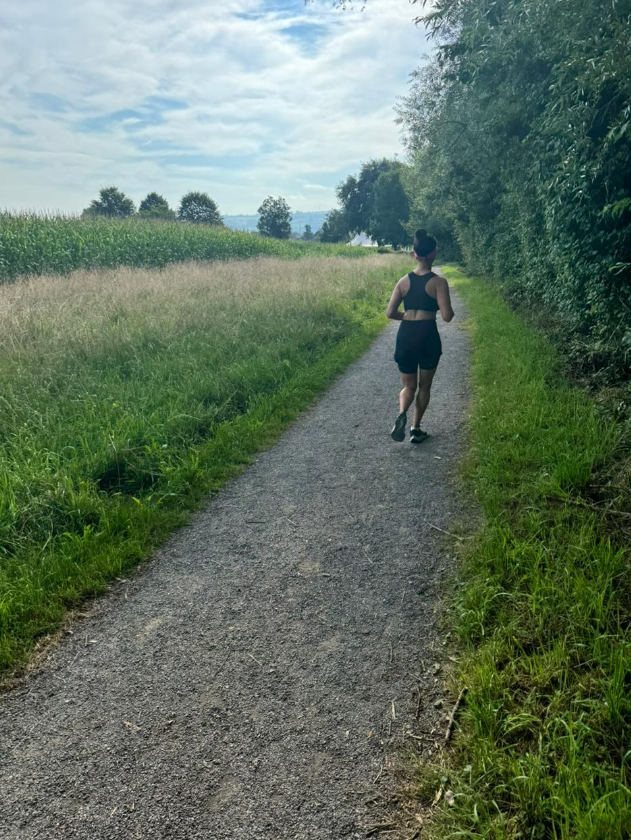LiveRun Half Marathon in Fortaleza
Hey there, fellow runners! Ever thought about tackling a half marathon in a stunning coastal city? Well, you’re in luck! This November, I’ll be running the half marathon in Fortaleza-CE, sponsored by XP Investimentos, and I couldn’t be more excited. Have you ever wondered what it takes to prepare for such an event? In this post, I’ll be sharing my personal training regimen, tips to maintain peak conditioning, and insights on how to make the most of your race day. Ready to lace up your shoes and join me on this journey? Let’s dive in and conquer this challenge together!

Enjoy Brazil Running
Running in Brazil offers a unique opportunity to explore this vibrant country in a way that few other activities can. Imagine starting your day with a scenic run along the stunning coastline of Fortaleza, where the sound of the waves provides a rhythmic backdrop to your strides. Not only does this allow you to immerse yourself in the local culture and natural beauty, but it also gives you a chance to bond with fellow runners and locals who share the same passion.
Combining your love for running with a family vacation is a win-win situation. While you prepare for the half marathon, your family can enjoy the myriad attractions Fortaleza has to offer, from its beautiful beaches to its lively markets. And after your runs, you can all come together to explore the city’s rich history and delicious cuisine. This way, you get to stay in peak condition for the race while making unforgettable memories with your loved ones. Plus, running is a fantastic way to maintain your fitness regimen even during the holidays, ensuring you return home feeling accomplished and rejuvenated. For more tips on balancing running with your busy life, check out this guide.
Essential Gear for Fortaleza Runners
Hey there, runner! If you’re gearing up for the half marathon in Fortaleza, let’s talk about the essential gear you’ll need to make the most of your race day. Running in a coastal city like Fortaleza can be both exhilarating and challenging, so having the right gear is crucial. Trust me, I’ve learned from experience that the right equipment can make a world of difference.
First things first, let’s talk about footwear. A reliable pair of running shoes is your best friend on this journey. Personally, I’ve been loving the ASICS Trabuco Gel 2. These hybrid shoes offer excellent support and cushioning, perfect for those long training runs and the big day itself. Make sure to break in your shoes well before the race to avoid any blisters or discomfort.
Next up, consider the weather. Fortaleza can be quite warm and humid, so moisture-wicking clothing is a must. Look for lightweight, breathable fabrics that help keep you cool and dry. Don’t forget a good pair of running socks to prevent chafing and blisters. A hat or visor and sunglasses will protect you from the sun, while a running belt can hold your essentials like energy gels, keys, and your phone.
Hydration is key, especially in a tropical climate. A handheld water bottle or a hydration vest can keep you refreshed throughout your run. If you’re like me and prefer not to carry too much, plan your route to include water stations or fountains. Lastly, consider a good GPS watch to track your pace and distance, helping you stay on target with your race day strategy.
Remember, every runner is different, so test out your gear during training to find what works best for you. With the right preparation, you’ll be ready to tackle that half marathon in Fortaleza with confidence. Happy running!
Nutrition Tips for Peak Performance
Hey there, running enthusiasts! As we gear up for the half marathon in Fortaleza, it’s crucial to focus on nutrition to fuel our bodies for peak performance. Ever wondered what you should be eating to get the most out of your training? Let me share some tried-and-true nutrition tips that have helped me stay energized and strong during my preparation.
First off, let’s talk about the importance of a balanced diet. Your meals should be rich in carbohydrates, proteins, and healthy fats. Carbs are your primary energy source, so don’t shy away from whole grains, fruits, and vegetables. Proteins are essential for muscle repair and recovery, so make sure you’re getting enough lean meats, beans, and dairy. And don’t forget about healthy fats from sources like avocados, nuts, and olive oil—they’re vital for sustained energy levels. Here are some key tips:
- Pre-Run Fuel: About 2-3 hours before your run, opt for a meal that’s high in carbs and moderate in protein. Think oatmeal with bananas or a whole-grain toast with peanut butter.
- Hydration: Staying hydrated is non-negotiable, especially in a humid city like Fortaleza. Carry a water bottle with you and sip throughout the day. Consider adding electrolytes to your water to replace what you lose through sweat.
- Post-Run Recovery: After your run, refuel with a mix of carbs and protein within 30 minutes. A smoothie with Greek yogurt, berries, and a handful of spinach is a fantastic option.
- Superfoods: Incorporate superfoods like açaí into your diet. Did you know that açaí is packed with antioxidants and can help reduce inflammation? Check out this post on açaí for runners to learn more about its benefits.
Remember, every runner is different, so it’s important to listen to your body and adjust your nutrition plan as needed. Experiment with different foods during your training runs to see what works best for you. And most importantly, enjoy the journey! There’s something incredibly rewarding about nourishing your body with the right foods and seeing the results in your performance. Let’s make this half marathon in Fortaleza an unforgettable experience, fueled by the best nutrition choices!
Post-Race Recovery and Care
Congratulations on crossing the finish line! Now that you’ve conquered the half marathon in Fortaleza, it’s crucial to focus on your post-race recovery and care. Trust me, your body will thank you for it. First things first, rehydrate! The coastal humidity can take a toll on your hydration levels, so make sure to drink plenty of water and consider electrolyte-rich beverages to replenish lost minerals. If you need tips on staying hydrated, check out my summer training guide.
Next, it’s time to think about nutrition. Your muscles have worked hard, and they need the right fuel to recover. Opt for a balanced meal rich in proteins, carbs, and healthy fats. A smoothie with protein powder, fruits, and a handful of nuts can be a quick and effective option. Don’t forget to include anti-inflammatory foods like berries and leafy greens to help reduce muscle soreness.
Another critical aspect of recovery is rest. While it might be tempting to jump back into your regular routine, give your body some downtime. Consider light activities like walking or swimming, which can aid in muscle recovery without adding extra strain. Swimming, in particular, is an excellent form of cross-training that I highly recommend. If you’re curious, you can read more about the benefits of swimming for runners in my detailed article.
Lastly, listen to your body. If you feel any unusual pain or discomfort, don’t hesitate to consult a healthcare professional. Remember, recovery is just as important as training. By taking these steps, you’ll ensure that you’re not only ready for your next race but also maintaining your overall health and well-being.
LiveRun Half Marathon in Fortaleza Read More »











